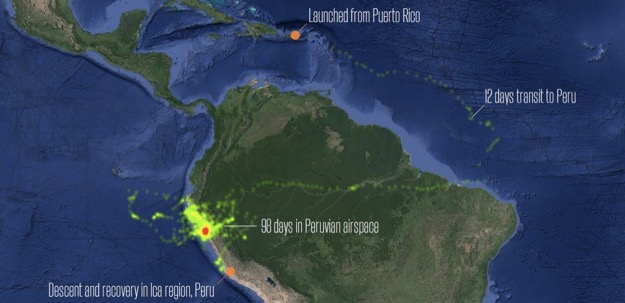Project Loon demonstrated a real-world usage case earlier this year, when the worst flooding in decades hit Peru. The stratospheric balloon-based broadband system under development by Alphabet, Inc. – Google’s parent company – was deployed to backfill mobile networks that were damaged or overwhelmed by the disaster.
That’s according to Anne Bray, Project Loon’s business development director. She was speaking at the inaugural Mobile World Congress Americas trade show in San Francisco last week.
She said that Project Loon began working with Telefonica in Peru a year ago. It was a testing ground for, among other things, balloon flight operations, including a long duration flight that began at a base in Puerto Rico and then remained on station over Peru for 14 weeks. When the floods hit, the program accelerated, launching balloons and scaling up to reach tens of thousands of people in a short amount of time. It was a new experience. Up until then, Project Loon’s deployments were still largely research projects; all of a sudden it was an emergency responder.
Project Loon is a wholesale play. It partners with terrestrial mobile companies in rural areas, and provides bandwidth to areas that they can’t reach, or where existing infrastructure can’t handle the load.
Using a solar-powered transciever – basically, a small cell site – attached to a balloon that floats at an altitude of about 20 kilometers, one Loon access point can cover about 5,000 square kilometers. Bray said they’re aiming for gigabit-class throughput on each balloon. Project Loon’s website specs the service as delivered to a user on the ground at 10 Mbps.
Early tests were with Vodaphone in New Zealand, but those were tests. Although commercial deployments were promised to follow quickly, it’s been slow to roll out. The flooding in Peru appears to be the catalyst that kicked Project Loon into something like a real world operational mode.

